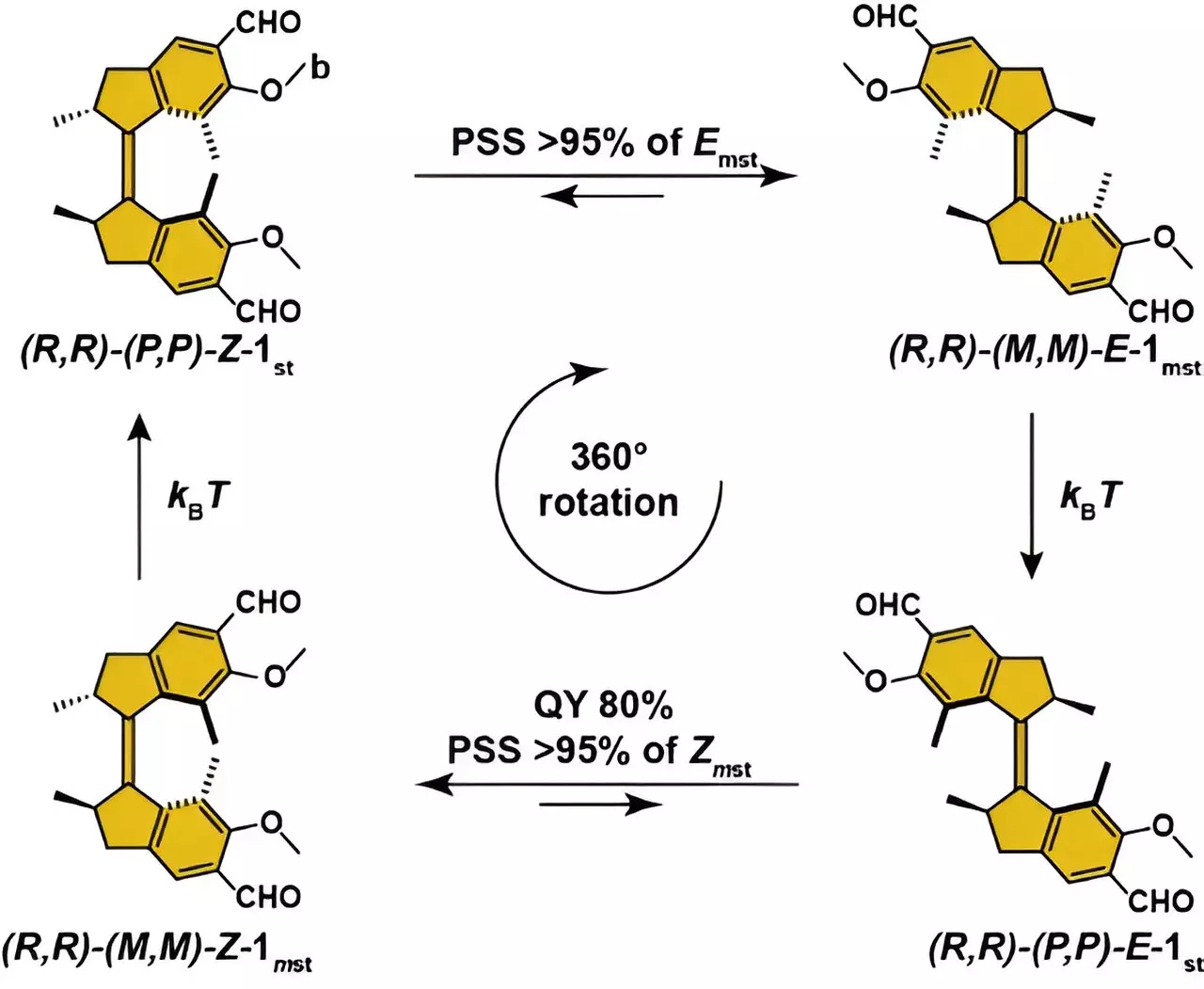Light-driven molecular motors have been in development for over two decades, originating from research conducted at the University of Groningen in the Netherlands. Even though the founder, Professor Ben Feringa, was awarded the Nobel Prize in Chemistry in 2016 for this groundbreaking work, the practical application of these motors has faced significant challenges. However, a recent publication in Nature Chemistry by the Feringa lab outlines new advancements that bring us closer to real-life applications.
During his Ph.D. studies at the Feringa laboratory, Jinyu Sheng – now a postdoctoral researcher at the Institute of Science and Technology Austria – focused on enhancing the efficiency of the “first-generation” light-driven molecular motor. Sheng discovered that only 2% of the photons absorbed by the motor molecule actually drive the rotary movement, indicating a low efficiency that hinders practical use. By adding an aldehyde functional group to the motor molecule as an initial step, he unintentionally stumbled upon a method that significantly improved its efficiency.
Sheng’s modifications not only increased the efficiency of the molecular motor but also provided better control over its motion. Previously, the rotation of the motor occurred in four distinct steps, resulting in motors being at different stages of the rotation cycle when irradiated with light. However, with the new adaptation, Sheng was able to synchronize all motors and control them at each stage, offering a multitude of possibilities for practical applications.
The enhanced control over the molecular motors opens avenues for diverse applications, such as utilizing them as chiral dopants in liquid crystals to produce different reflection colors based on their positions. Additionally, this advancement can facilitate the control of molecular self-assembly processes, expanding the potential uses of these motors in various scientific fields.
Another significant outcome of Sheng’s modifications is the shift in the absorption of light to longer wavelengths by adding the aldehyde group to the motor molecule. This change enables the motors to operate more efficiently in medical applications and materials science, as longer wavelengths penetrate deeper into living tissues or bulk materials, enhancing the overall effectiveness of these molecular motors.
The newfound efficiency and control provided by Sheng’s advancements have sparked collaboration with colleagues for exploring diverse applications of these light-driven molecular motors. The potential for utilizing these motors in different fields, coupled with the ongoing research efforts within the Feringa lab, indicates a promising future for further advancements in this area. However, despite the progress made, there remains a lingering challenge for researchers: understanding the underlying mechanisms responsible for the enhanced efficiency brought about by the recent modifications.
The recent developments in improving the efficiency and control of light-driven molecular motors mark a significant breakthrough in the field. The potential applications of these motors in various scientific disciplines, along with the ongoing research efforts to uncover their underlying mechanisms, hold promise for a future where these molecular motors play a vital role in advancing scientific research and technological innovations.


Leave a Reply